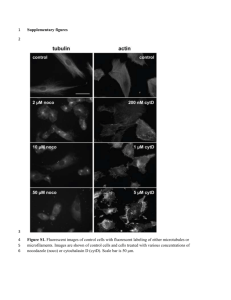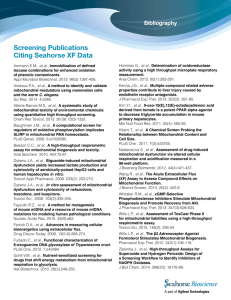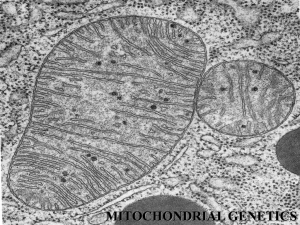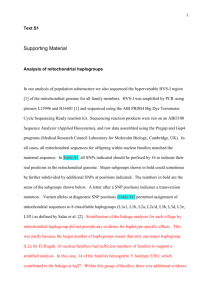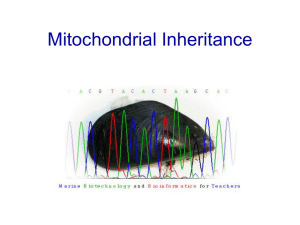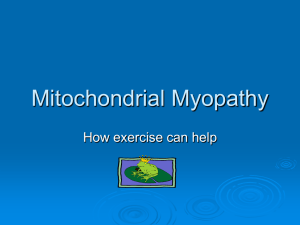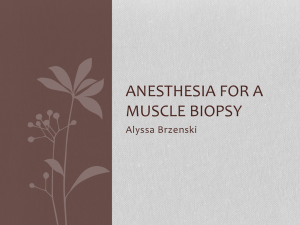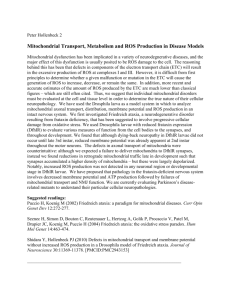Multi-photon imaging of live rat kidney slices reveals differences in
advertisement
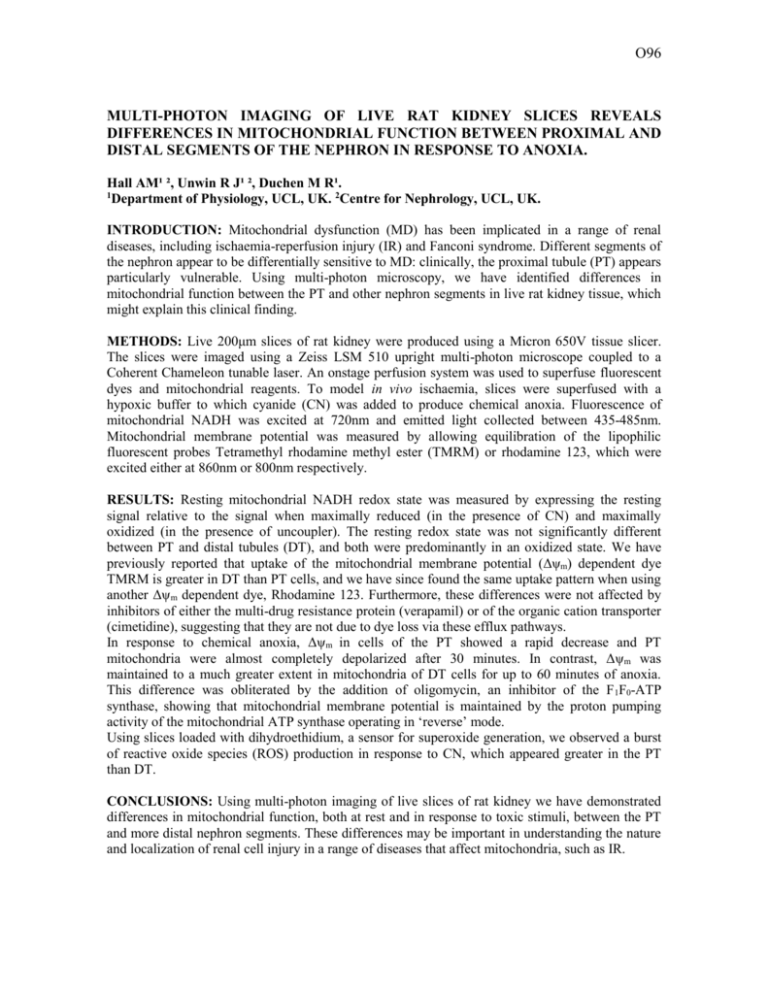
O96 MULTI-PHOTON IMAGING OF LIVE RAT KIDNEY SLICES REVEALS DIFFERENCES IN MITOCHONDRIAL FUNCTION BETWEEN PROXIMAL AND DISTAL SEGMENTS OF THE NEPHRON IN RESPONSE TO ANOXIA. Hall AM¹ ², Unwin R J¹ ², Duchen M R¹. 1 Department of Physiology, UCL, UK. 2Centre for Nephrology, UCL, UK. INTRODUCTION: Mitochondrial dysfunction (MD) has been implicated in a range of renal diseases, including ischaemia-reperfusion injury (IR) and Fanconi syndrome. Different segments of the nephron appear to be differentially sensitive to MD: clinically, the proximal tubule (PT) appears particularly vulnerable. Using multi-photon microscopy, we have identified differences in mitochondrial function between the PT and other nephron segments in live rat kidney tissue, which might explain this clinical finding. METHODS: Live 200μm slices of rat kidney were produced using a Micron 650V tissue slicer. The slices were imaged using a Zeiss LSM 510 upright multi-photon microscope coupled to a Coherent Chameleon tunable laser. An onstage perfusion system was used to superfuse fluorescent dyes and mitochondrial reagents. To model in vivo ischaemia, slices were superfused with a hypoxic buffer to which cyanide (CN) was added to produce chemical anoxia. Fluorescence of mitochondrial NADH was excited at 720nm and emitted light collected between 435-485nm. Mitochondrial membrane potential was measured by allowing equilibration of the lipophilic fluorescent probes Tetramethyl rhodamine methyl ester (TMRM) or rhodamine 123, which were excited either at 860nm or 800nm respectively. RESULTS: Resting mitochondrial NADH redox state was measured by expressing the resting signal relative to the signal when maximally reduced (in the presence of CN) and maximally oxidized (in the presence of uncoupler). The resting redox state was not significantly different between PT and distal tubules (DT), and both were predominantly in an oxidized state. We have previously reported that uptake of the mitochondrial membrane potential (Δψm) dependent dye TMRM is greater in DT than PT cells, and we have since found the same uptake pattern when using another Δψm dependent dye, Rhodamine 123. Furthermore, these differences were not affected by inhibitors of either the multi-drug resistance protein (verapamil) or of the organic cation transporter (cimetidine), suggesting that they are not due to dye loss via these efflux pathways. In response to chemical anoxia, Δψm in cells of the PT showed a rapid decrease and PT mitochondria were almost completely depolarized after 30 minutes. In contrast, Δψm was maintained to a much greater extent in mitochondria of DT cells for up to 60 minutes of anoxia. This difference was obliterated by the addition of oligomycin, an inhibitor of the F 1F0-ATP synthase, showing that mitochondrial membrane potential is maintained by the proton pumping activity of the mitochondrial ATP synthase operating in ‘reverse’ mode. Using slices loaded with dihydroethidium, a sensor for superoxide generation, we observed a burst of reactive oxide species (ROS) production in response to CN, which appeared greater in the PT than DT. CONCLUSIONS: Using multi-photon imaging of live slices of rat kidney we have demonstrated differences in mitochondrial function, both at rest and in response to toxic stimuli, between the PT and more distal nephron segments. These differences may be important in understanding the nature and localization of renal cell injury in a range of diseases that affect mitochondria, such as IR.

